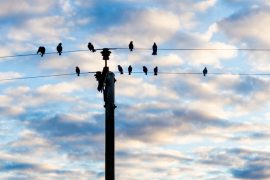One key teaching and learning strategy is fostering the role that students themselves play in developing as resilient lifelong learners. This strategy highlights educators’ role in empowering students to become autonomous and resilient leaners with high self-efficacy. However, such an important goal can be challenging, particularly for learners who are among a new cohort of peers. For students to become autonomous, resilient lifelong learners, they require positive peer relationships and a sense of connectedness (i.e., community). Developing community is key to supporting student resilience (Ang et al., 2021; McIntosh, & Shaw, 2021). Many of us teach in disciplines where developing a sense of community is critical as our graduates enter a challenging profession where their university peers are often their best support as they manage the leap from university to industry.
Igniting the fire for your learning community

Building a sense of community starts with us, the lecturers and tutors, before class begins. A first consideration is asking how well do you know your learners? Checking out the Know Your Students (KYS) page before classes begins is a great start. Beyond this, being prepared by reviewing student name pronunciations before class #1 is also useful. Students should know that their individual presence is valued from the beginning, and knowing their names is one way of demonstrating this. Also think about how you can facilitate students learning each other’s names in class – using name labels or name tents can be handy for week 1.
Throughout the semester, create regular opportunities to connect as these can be most effective. To start, it is a great idea to think about opportunities you organically have to talk to students informally about their course and other interests. Getting to know your students as individuals makes engaging them with the content much easier.
Effectively running group work activities
Among students, it is important to plan for opportunities for them to collaborate meaningfully. Though we never intend for group work to ‘flop’, sometimes it doesn’t quite foster that sense of community in the way we hope. Some strategies you can think of to make group work rock instead of flop can include:
- Having device-free activities.
- Using strategies such as think-pair-share, which give students a moment to collect their own thoughts prior to sharing. This can give them the needed time to effectively engage with peers.
- Re-arranging the furniture to facilitate discussion.
- Allow groups to ‘report back’ to the larger class in different forms – some groups might feel more comfortable to provide their thoughts on a Padlet that can be shared during whole-class discussion time at the end of group work activities, rather than speak in front of everyone.
Educational research has looked extensively into optimal group work organisation among school-aged students. Though our students are older, the principles can still be applied. To “build a thinking classroom” with active engagement, Peter Lilejdahl’s research has convincingly found that the ideal group size is three. This allows for a variety of perspectives but avoids the formation of subgroups or students being left out.
Another key element of successful groupwork is visibly random grouping. Visibly random grouping allows students to see there is no ‘system’ to being assigned to work with a peer and allows them to engage with a range of different perspectives. Regularly changing the groups is important so that groups do not fall into specific roles, resulting in some members becoming more passive than we hope.
Final thoughts
If developing a greater sense of community in your class is an important goal, it can be useful to openly state this to your students. Talking about the benefits of community in your local context makes this goal meaningful. University classes are so much more than transmitting content, they provide the invaluable resource of the support of each other.
Ang, W. H. D., Shorey, S., Hoo, M. X. Y., Chew, H. S. J., & Lau, Y. (2021). The role of resilience in higher education: A meta-ethnographic analysis of students’ experiences. Journal of Professional Nursing, 37(6), 1092-1109.
McIntosh, E. A., & Shaw, J. (2017). Student resilience: Exploring the positive case for resilience. Unite Students Publications.





